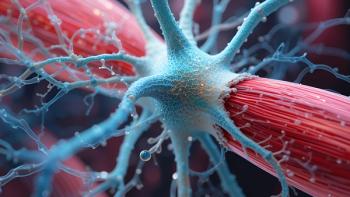
Deciphering Causes of Protein Aggregation Requires Many Methods
Protein aggregation is a term that can include many types of aggregation, from rapidly reversible aggregation caused by non-covalent bonds to irreversible aggregation in the form of covalent oligomers.
Protein aggregation is a term that can include many types of aggregation, from rapidly reversible aggregation caused by non-covalent bonds to irreversible aggregation in the form of covalent oligomers. Such aggregation can have many causes, such as incorrect folding during protein expression, or denaturation during protein purification, formulation, transportation, or storage. And because no single analytical method will detect all types, one needs to have an arsenal of methods. At the last session of the AAPS National Biotechnology Conference, held June 19–21 in Boston, a series of speakers discussed the causes of aggregation, approaches to avoid it, techniques for detecting and analyzing it, and regulatory filings for the assays used.
Multiple Causes
Mary Cromwell, MS, scientist and senior group leader of early-stage pharmaceutical development at Genentech (South San Francisco, CA,
In one of Cromwell’s examples, precipitation occurred while loading the batch onto ultrafiltration–diafiltration equipment. The problem, her team discovered, lay in a previous step to adjust the pH of a column pool, resulting from a change in an impurity for a raw material. In another case, aggregation occurred during filling, because the therapeutic protein rapidly associated at 5° C. The group resolved the problem by carefully coordinating fill and finish steps to minimize the time that the drug spent at or near that temperature.
Cromwell used these and other examples to point out actors to keep in mind to prevent or find solutions for aggregation. “You should consider a variety of factors such as hold times, raw materials, process design, and even the materials of construction of containers used for storage,” she concluded.
Preventing Aggregation Through Early Development Studies
Rajesh Gandhi, PhD, associate director of exploratory biopharmaceutics and stability at Bristol-Myers Squibb’s Pharmaceutical Research Institute (New Brunswick, NJ
“It can also be very useful to combine the results of SEC and microcalorimetry studies to determine the best buffer composition,” he said. “This is especially useful if aggregation is the predominant pathway for degradation.”
Sedimentation Velocity and Light Scattering Techniques
John Philo, PhD, director of biophysical chemistry at Alliance Protein Laboratories (Camarillo, CA,
One important advantage of this technique, said Philo, is that it allows freedom in the choice of buffer. This is useful in cases in which the solvent needed for size exclusion chromatography (SEC) would dissociate all the aggregates. Another advantage is that a wide range of sizes can be detected in one experiment, from monomers to 100-mers.
Philo noted, however, that resolution for smaller aggregates may not be sufficient, and warned that some examples designed to show the excellent resolution of the method can be deceptive. “Effective resolution is related to the signal-to-noise ratio, so resolution decreases as the fraction of minor peaks goes down,” he explained. In other words, extremely high resolution could mean that the sample was particularly bad.
Multi-angle light scattering is another useful method, which involves adding a light scattering detector in addition to the ultraviolet or refractive index detectors commonly used with a size-exclusion system. The light scattering signal is proportional to the product of the concentration and the molecular weight of the species. Masses obtained using this method are absolute (independent of the conformation and elution position); the ratio of light scattering to concentration signals will be the same whether the protein is folded or unfolded.
“This method can be useful to display absolute molecular weight in units of monomers,” said Philo, or to get good resolution in a lot containing many large, “sticky” oligomers, such that chromatography would not resolve a dimer. Philo showed an example in which chromatography appeared to show a dimer, but light scattering revealed it to be an alternate form of the monomer.
Batch-mode dynamic light scattering (DLS), in turn, is most useful for analyzing the white, visible particulates often called “snow.” DLS, said Philo, is one of the few tools that can effectively detect the precursors of visible particulates, which is useful for making qualitative assessment of formulations, or for tracking where in manufacturing process protein damage is occurring.
The main weakness of DLS is low resolution: two species are not resolved as separate peaks unless their radii differ by about 2-fold (or ~8-fold in mass). Thus, DLS is not useful for detecting or quantifying small oligomers, in the dimer-to-octamer range.
Regulatory Filings for Protein Aggregation Assays
Michelle Frazier-Jessen, PhD, of the Division of Monoclonal Antibodies at FDA, provided a reviewer’s perspective on aggregates. Of 19 approved monoclonals that she surveyed, Frazier-Jessen noted that SEC was the most common method used for purity assays for lot release. SEC, she noted, is a well-established method, and is fairly easy, inexpensive, and can be validated. Its main shortcoming is that it may not represent all the aggregate species in a product, and issues may arise with solvents, column conditioning, and column retention of aggregates. Because of these shortcomings with SEC, it is essential that complementary analytical methods for aggregate detection are used during characterization and possibly for lot release.
When submitting SEC data in an investigational new drug (IND) application, Frazier-Jessen said, applications should provide sufficient detail about how the SEC method is performed, such as column specifications and conditions. “Don’t provide just the summary, provide the data,” she said. “Applicants often provide a chromatogram that doesn’t show the baseline clearly. In those cases, I often ask for another chromatogram.”
For all methods submitted as part of a biologics license application, Frazier-Jessen said applications should include a thorough description of the assay, including standard operating procedures and supporting characterization data, as well as data related to any important changes made to the assay during development. “Applicants should also submit a full validation report,” she said.
“Keep in mind that staff at your company or at the agency may change during the lifetime of the product,” she remarked. “So it’s important to document all of this cumulative information and provide justifications where needed.” She also noted that it is extremely helpful to reviewers if the applicant tabulates the validation parameter results within the method validation report.
Upcoming Conference
FDA, AAPS, and the University of Colorado Center for Pharmaceutical Biotechnology will host a workshop on protein aggregation September 26 and 27. For more information, see
-Laura Bush
Newsletter
Stay at the forefront of biopharmaceutical innovation—subscribe to BioPharm International for expert insights on drug development, manufacturing, compliance, and more.





